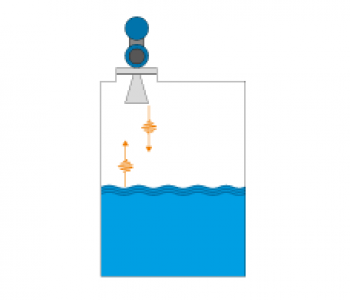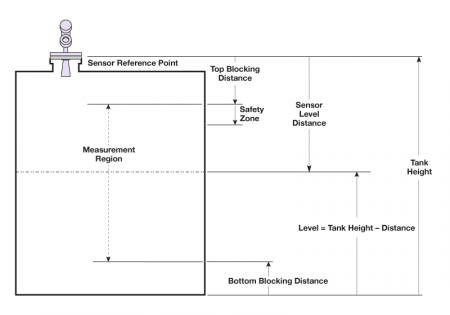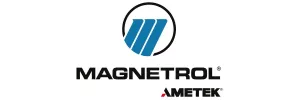The product
Microwave-based radar is a superior measurement technology with its ability to operate effectively in a wide range of process conditions. It has been too expensive to use as a replacement for ultrasonic transmitters in simple, daily applications…until now. The R82 radar transmitter can be considered the answer to almost every daily level measurement application imaginable.
Pulse burst radar technology
Pulse Burst Radar emits short bursts of energy to a liquid surface. Ultra-high-speed timing circuitry measures the time of the signal reflected off the liquid surface.Sophisticated signal processing filters out false reflections and other background noises. The exact level is then calculated, by factoring in tank height and other configuration information. The circuitry is extremely energy efficient so no duty cycling is needed as with other radar devices. This allows the device to track high rates of level changes up to 4,5 m/minute (180″/min).

Features
- 24 VDC, loop-power with HART®
- Housing: Lexan® or cast aluminum
- Range: 15″ (380 mm) to 40 feet (12 m) measured from process connection
- Antenna: Encapsulated horn – polypropylene or Tefzel®
- Process Temperature: -40 to +200 °F (-40 to +93 °C)
- Process Pressure: Vacuum to 200 psig (-1 to 13.8 bar)
Options
- General Purpose and Intrinsically Safe approvals
- Lexan or cast aluminum, single compartment housing
- ¾” NPT or M20 conduit connections
- Fully encapsulated antenna of polypropylene or Tefzel®
- Process Connections: 2″ NPT or BSP
- Antenna extensions for nozzle heights up to 12″ (300 mm)
Operating principle
The R82 radar transmitter is based on pulse burst radar technology with equivalent time sampling circuitry. Short bursts of 26GHz microwave energy are emitted and subsequently reflected from the liquid level surface. Distance is calculated by the equation D = Transit time (round-trip)/2. Liquid level is then calculated by applying the user’s tank height and sensor offset values.

Approvals
| ATEX | Ex ia |
| CCOE | Ex ia |
| CSA | IS, NI |
| EAC (GOST) | Ex ia, Metrology |
| IEC | Ex ia |
| Inmetro | Ex ia |
| SIL | SIL 1 (1oo1) |
Other approvals are available. Consult factory for more details.
request quote







